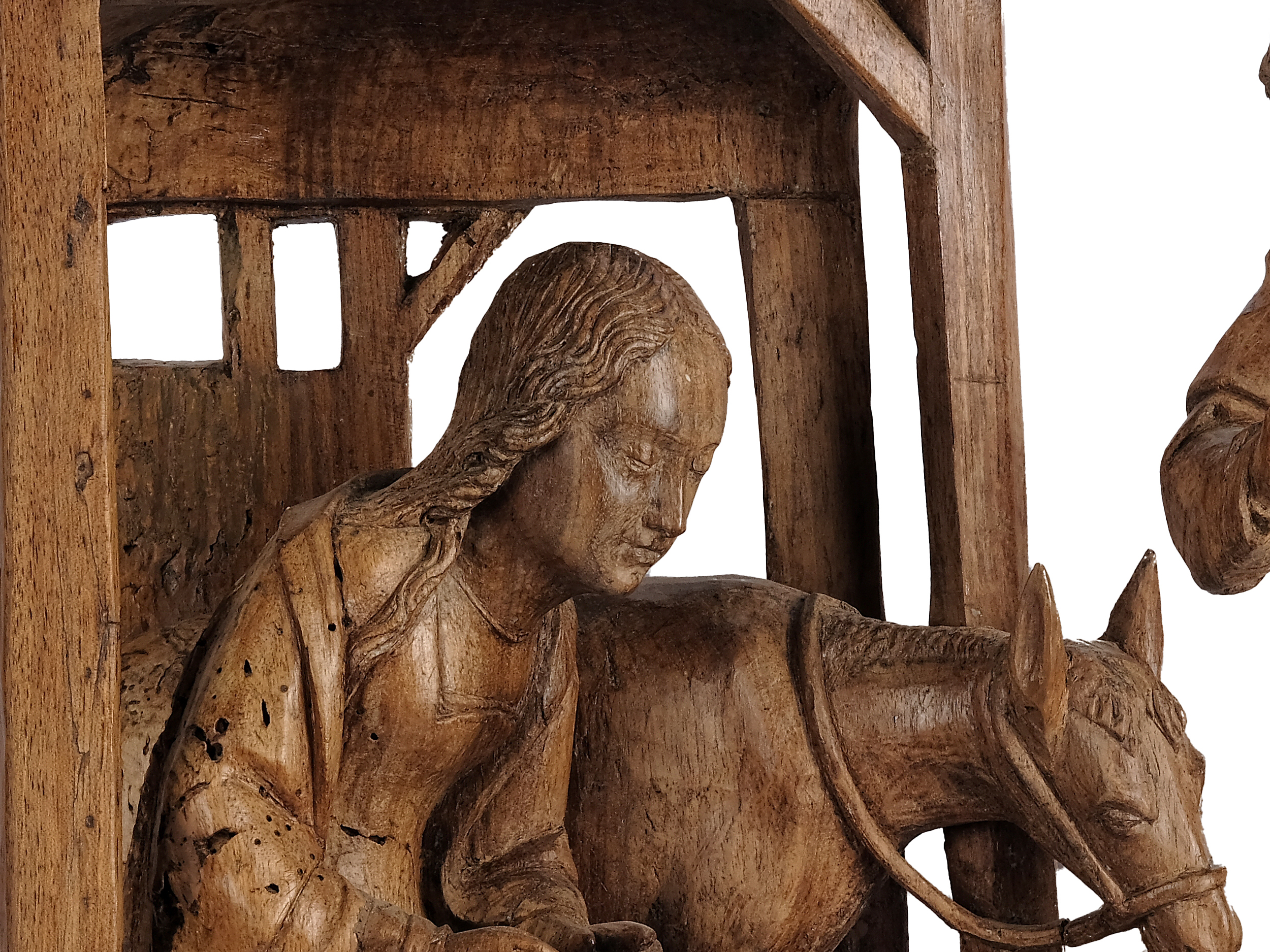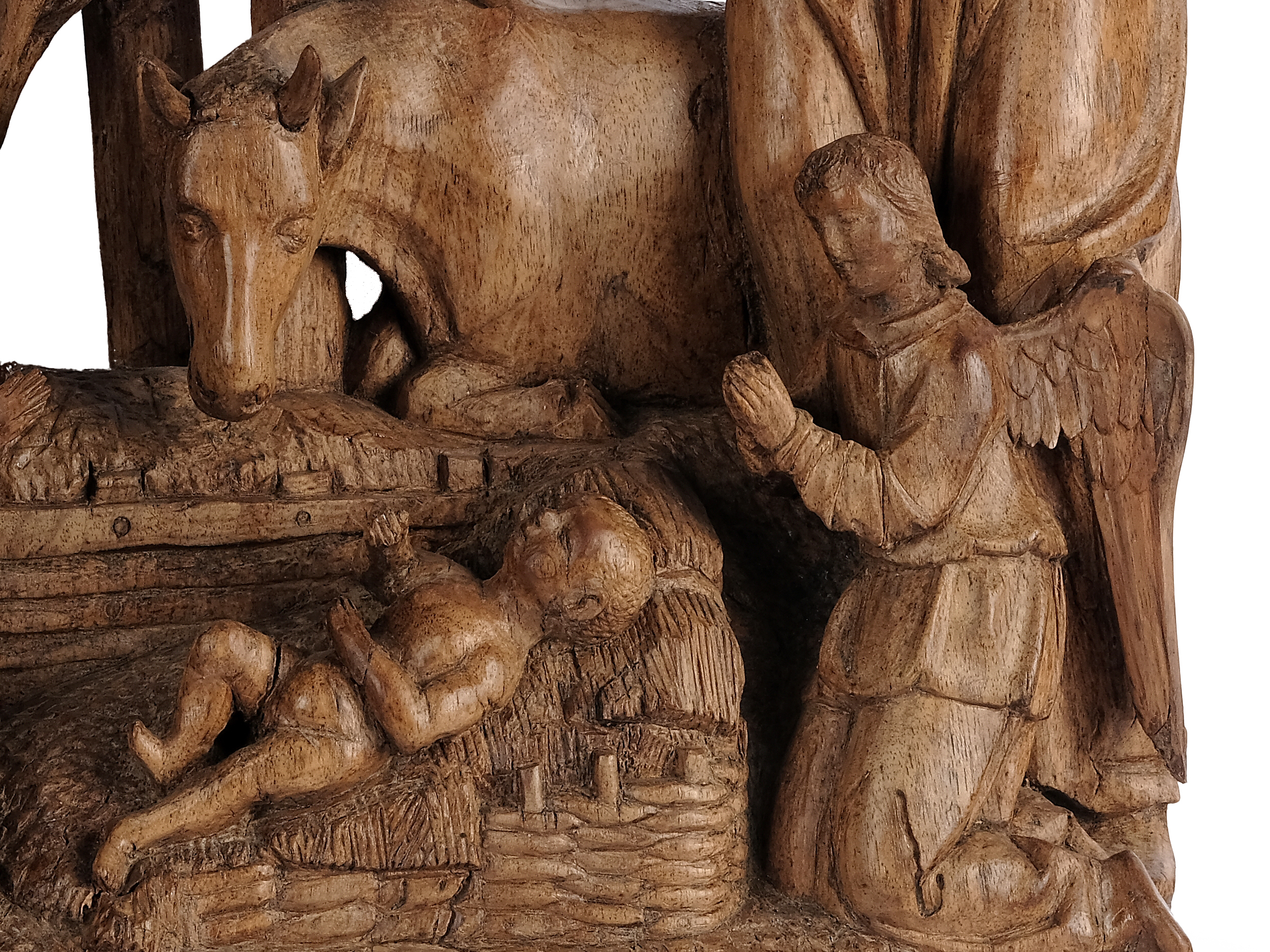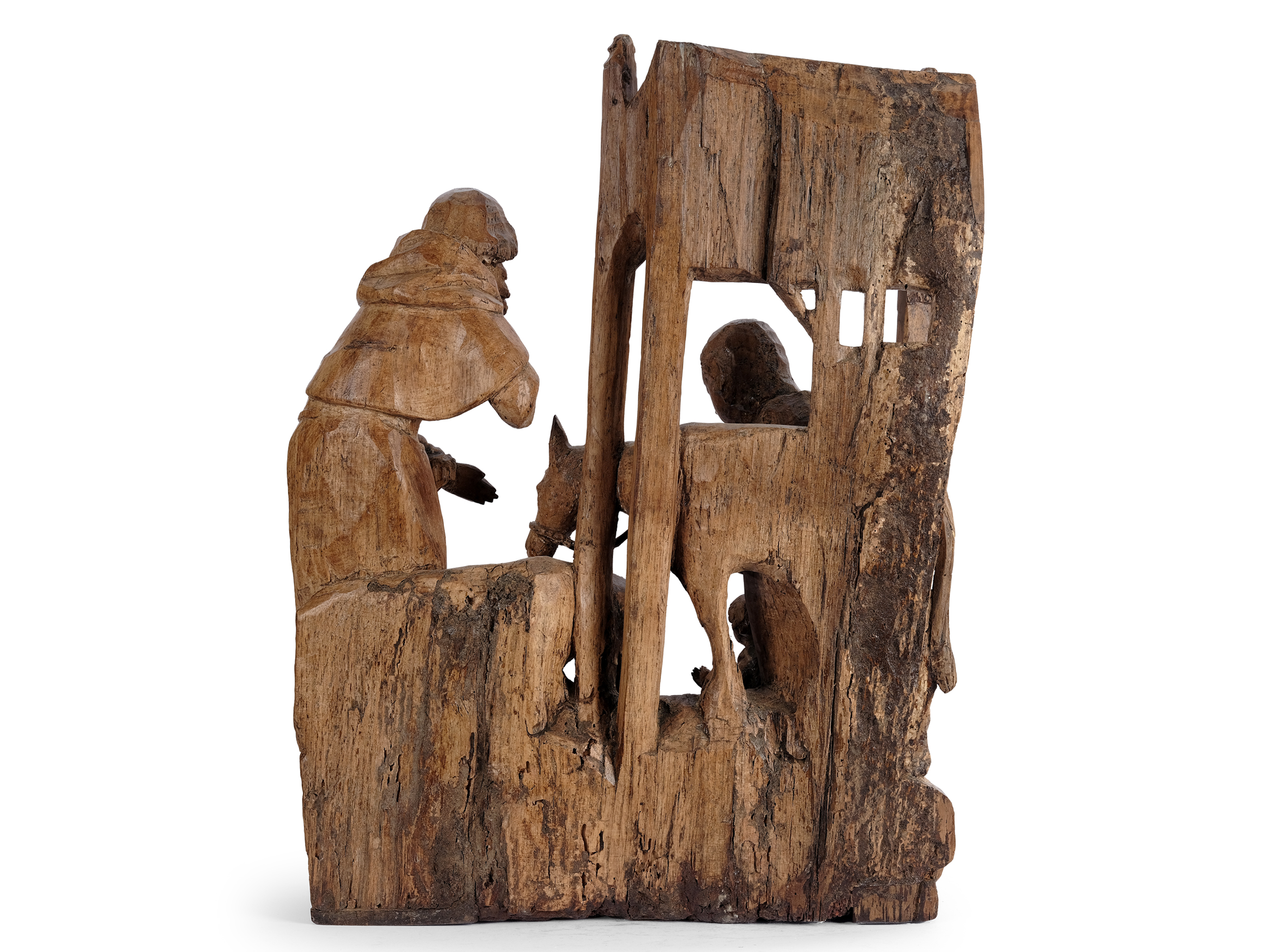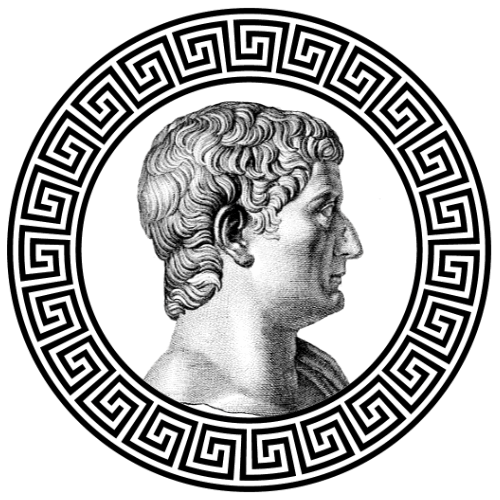Birth of Christ
17th Tiberius Auction
Birth of Christ
Starting price:
€ 4.000
- USD: 4.612 $
- GBP: 3.508 £
Estimated price: € 4.000 / 8.000
| from | to | bid increment |
|---|---|---|
| 0 € | 99 € | 5 € |
| 100 € | 199 € | 10 € |
| 200 € | 399 € | 20 € |
| 400 € | 999 € | 50 € |
| 1.000 € | 1.999 € | 100 € |
| 2.000 € | 3.999 € | 200 € |
| 4.000 € | 9.999 € | 500 € |
| 10.000 € | 19.999 € | 1.000 € |
| 20.000 € | 39.999 € | 2.000 € |
| 40.000 € | ∞ | 5.000 € |
Birth of Christ
Unknown workshop
Italy
First half of the 16th century
Carved walnut
54 x 40 x 14 cm
Late Gothic relief from a Passion altar
This impressively crafted walnut relief depicts the birth of Christ in vivid late Gothic imagery. Stylistically and iconographically, the scene belongs to the context of a more comprehensive Passion cycle, which was probably once conceived as a winged altar. Unlike the isolated Christmas depictions of the later devotional tradition, the birth is embedded here in a dramatic, visionary history of salvation, as was particularly favored in the late 15th and early 16th centuries, especially in the southern Alpine region.
Composition and figures
At the center of the composition lies the naked baby Jesus on a sloping manger standing on a floor covered with hay. The child’s posture is strikingly lifelike: the right leg is playfully bent, the right hand stretched upwards. Two angels in long, flowing robes and with outstretched wings kneel in prayer beside the child. In its smaller dimensions compared to the main figures, the relief follows the significance of late Gothic sculpture.
On the left, Mary kneels in deep devotion, her body also turned toward the child. Her close-fitting, streaked hair is partly hidden under her cloak over an undergarment that clings tightly to her upper body. The quiet humility of the Mother of God, her bowed head and slightly spread hands show deep piety and at the same time an almost maternal bewilderment – a moment of tension that is typical of late Gothic Marian iconography.
On the right stands Joseph – unusually present and clearly individualized. With his bald head and central tuft of hair, his full sideburns and beard, he appears to be an older, experienced companion. His robe with an overlaying cloak and hood can be interpreted as travel clothing; a bag on his belt emphasizes this interpretation. His sweeping gestures make him appear extremely lively, and he seems to be playing a mediating role in the events.
Architecture and spatial staging
The scene is set in front of a simple barn architecture with an ox and a donkey, which – as a traditional motif – evoke the animal stable in Bethlehem. The relief maintains a clear depth gradation and uses architectural elements as a narrative frame. The deliberately simple hut contrasts with the significance of the event depicted: the incarnation of Christ in poverty, a central idea of Franciscan-influenced late medieval piety, is subtly emphasized here.
Art-historical classification
The regional classification is based on the general execution with clearly recognizable Italian influences. The entire staging has the effect of a nativity scene: a calm, stage-like condensation with a clear gradation of foreground, middle ground, and background and a pronounced central reference. The figures’ postures and gestures are oriented toward devotion; especially the kneeling angels in the foreground, with their slightly bowed heads, finely rhythmic arm positions, and slender proportions, display a restrained, Italian-influenced grace. The hair is arranged in soft, ribbon-like strands or loosely curled sections that are laid over the forehead and temples, emphasizing the mild physiognomy. The drapery follows broad, flowing folds; the folds fall evenly over the knees and hips and avoid overly angular breaks, which further emphasizes the overall harmonious character of the composition and conception of the figures. This combination of features points to an Italian conception in the first half of the 16th century.
Final observation
This relief of the Nativity combines narrative density with high artistic standards. It conveys both the miracle of the Incarnation and the humble silence of the Christmas event. The depth of late Gothic piety is revealed in the sensitive depiction of the figures, the subtle gestures, and the clear spatial composition. At the same time, the work remains a moving testimony to the diversity of European wood carving after 1500.








